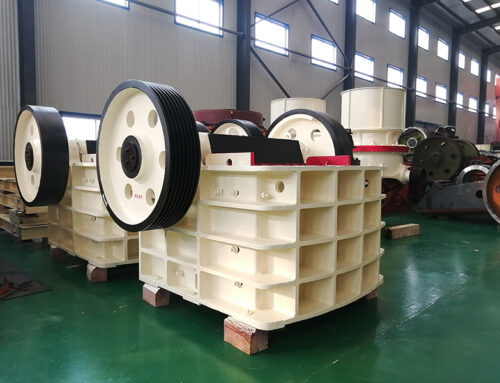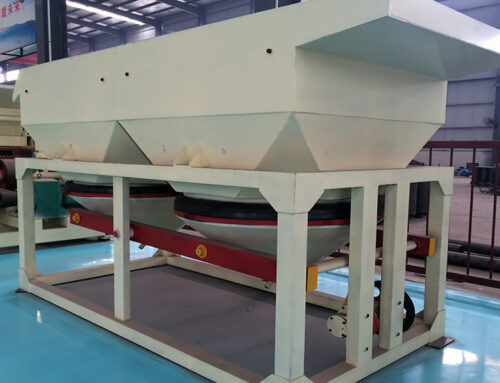In industrial production, hydrocyclone group plays a vital role. Hydrocyclone is a liquid-solid separation device that uses the centrifugal force generated by the rotation of the fluid to separate solid particles, which has many advantages such as simple structure, low cost, small footprint and easy maintenance. It has been widely used in many industries such as chemical, metallurgy, mining, food, medicine and so on.
In the field of mining, hydrocyclone can be used for ore treatment and mining waste management, effectively separating minerals with different densities, improving the ore grade, reducing the accumulation of waste rock, and at the same time, helping to recover valuable mineral resources and improve the overall economic efficiency. In agriculture and irrigation systems, hydrocyclones remove sediment and suspended matter from irrigation water, ensuring efficient operation of the irrigation system and reducing system clogging, which is indispensable for large-scale farmland irrigation and water-saving irrigation technologies. In the chemical industry, hydrocyclones are used to separate and purify chemicals, separate solid catalysts to improve product purity, and provide stable and uniform operating conditions for processes that require efficient mixing and dispersion.
一.The selection of hydrocyclone group type
1.Selection basis
(1)The main basis for selecting hydrocyclone group is firstly the volume of slurry required to be processed.
Different scales of production operations on the demand for slurry volume varies greatly, for example, large-scale mining production, the daily need to deal with a large number of slurry, which requires the selection of large-scale hydrocyclone group with strong processing capacity. For some small-scale production processes, the handling capacity is relatively small, then you can choose a smaller specification of the cyclone group.
Classification particle size is also an important selection basis. If the production requirements of the slurry for fine classification, separation of smaller particle size, you need to choose the separation of high precision cyclone group. On the contrary, if only coarse particle size separation, you can choose a larger capacity but relatively low separation accuracy of the cyclone group.
(2)According to different production needs to choose the appropriate specifications of the cyclone group.
Different production requirements determine the selection of hydrocyclone group specifications. For example, in the chemical industry, for some chemical reaction processes that require high-precision separation, it may be necessary to select a small-diameter cyclone group to ensure that the size of the separated particles meets the requirements of the reaction. In the mining industry, for large-scale ore processing operations, large-diameter hydrocyclones may be preferred to improve processing efficiency.
2.Considerations
(1)Processing capacity and separation accuracy Effect of diameter on processing capacity and separation accuracy. The role of cone angle on performance.
Diameter has a significant effect on processing capacity and separation accuracy. In general, the larger the diameter of the cyclone, the greater the treatment capacity. This is because a cyclone with a large diameter is able to hold more slurry and thus process more material per unit time. However, the increase in diameter is accompanied by a relative decrease in separation accuracy. Smaller diameter cyclones have a weaker processing capacity but are able to separate fine particles more efficiently with a higher separation accuracy.
The cone angle also plays an important role in the performance of the cyclone. When the cone angle is larger, the concentration of the underflow will increase, which is suitable for operations such as thickening and desliming. And when the cone angle is small, the classification effect is better, suitable for the classification of fine-grained materials.
(2) The relationship between inlet pressure and energy consumption inlet pressure and separation effect. How to find a balance between separation effect and energy consumption.
The inlet pressure is closely related to the separation effect. Higher inlet pressure can improve the separation efficiency of the cyclone. This is because at high pressure, the slurry enters the cyclone at a faster rate and the centrifugal force increases, thus allowing particles of different sizes to be separated more effectively. However, high inlet pressures also increase energy consumption and equipment wear.
In order to find a balance between separation effect and energy consumption, it needs to be adjusted to the specific production requirements. The inlet pressure should be kept as low as possible to reduce energy consumption while maintaining the separation effect. This balance can be achieved by optimising the structural design of the cyclone, adjusting the concentration and flow rate of the slurry, and so on.
(3) Material and durability Characteristics and applicable scenes of cyclone made of different materials.
Metal material cyclone has high strength and corrosion resistance, suitable for handling high temperature, high pressure and corrosive media. For example, in some special chemical production process, may encounter corrosive slurry, this time the metal material cyclone can better cope with this harsh working environment. However, the cost of metal cyclone is higher and heavier.
Plastic cyclone lightweight, low cost, especially suitable for low concentration, temperature is not particularly high occasions. For example, in small laboratories or in less demanding production processes, plastic cyclones can fulfil the basic separation needs. However, the durability and resistance to high temperatures are slightly lower than with metal.
(4) Structure type and special needs of the standard type, series type, parallel type and special structure cyclone characteristics and applications.
Standard type cyclone is simple in design and easy to operate and maintain, but the efficiency may be reduced when dealing with high concentration suspensions. They are suitable for general separation operations, such as some conventional mining classification or chemical purification processes.
Tandem cyclone consists of a number of cyclones connected in series to achieve higher separation accuracy and capacity. Suitable for the need for high separation and large flow rate occasions, such as large-scale mining processing plant or chemical production in the fine separation operation. However, series-connected cyclones increase the complexity and footprint of the equipment.
Parallel cyclones use multiple cyclones in parallel to increase capacity. They are very effective when there is a high flow rate requirement, such as in large-scale mining or large-scale separation operations in chemical production. However, parallel cyclones require careful load balancing to ensure that the individual cyclones work efficiently.
(5) Fluid characteristics and working conditions require the application of solid-liquid separation, liquid-liquid separation, gas-liquid separation.
Solid-liquid separation is specialised in separating solid particles from liquids and is widely used in mining, metallurgy and chemical industries. However, it has limited applicability to viscous liquids. In the mining industry, solid-liquid separation can effectively separate out impurities in the ore and improve the ore grade. In the chemical industry, solid-liquid separation can be used to separate the products of chemical reactions and catalysts, etc.
Liquid-liquid separation is used to separate liquids of different densities and is suitable for handling emulsified liquids. However, the separation accuracy is greatly affected by the feeding conditions and is not suitable for high viscosity liquids. For example, in the petrochemical industry, oils of different densities can be separated by liquid-liquid separation.
Gas-liquid separation is used to remove liquid droplets from gases and is more common in the oil and gas industry. However, the inlet requirements for the fluid are high. Gas-liquid separation ensures the purity of the gas and prevents droplets from causing damage to subsequent equipment.

二.The operation of hydrocyclone group
Summary of operating points
Preparation before operation:
Check whether the cyclone group and each pipeline connection is firm, check the wear and tear, if there is wear and tear should be replaced in a timely manner to ensure the normal operation of the equipment.
Clear the pipeline and box debris, ensure that the valve state is correct, to prevent clogging caused by debris, and the valve can not be in a half-open state.
If possible first test run with water, check the electrical, lubrication and other systems to ensure that there is no leakage in the connection parts and the feeding pressure is normal, so as to prepare for the subsequent operation with material.
Normal operation:
Check the pressure stability, flow size and discharge status when the equipment is running, and test the overflow and underflow concentration and fineness regularly, so as to find out the problems and make adjustments in time.
Keep the feeding pressure stable and work within the specified range to avoid pressure fluctuation affecting the performance of the equipment and grading effect. Pressure fluctuation may be caused by the drop of liquid level in the pump tank, air traction, pump clogging or wear and tear, etc., and should be adjusted according to the specific situation.
Regularly check whether the discharge is smooth, observe the state of the bottom flow discharge, the bottom flow discharge should be ‘umbrella’, if there is any abnormality, it should be adjusted in time.
Regularly test the overflow, underflow concentration and fineness, adjust the abnormal situation in time, such as overflow concentration increase or ‘overflow running coarse’ may be related to the increase of feed material concentration and underflow mouth blockage.
Check the amount of leakage and loss at the connection point and take remedial measures to ensure the equipment runs smoothly under normal pressure.
Special case handling:
Analyse the reason for the drop in feed pressure, if it is caused by a drop in the pump tank level, adjust it by increasing the level, closing one or two cyclones or reducing the pump speed; if it is caused by a clogged or worn pump, overhaul the pump.
Parking operation:
Empty the feed pool in time to prevent clogging accidents, can be added to the feed pool to prevent coarse materials and debris.
Record equipment operation and problems for subsequent analysis and improvement.
Correct selection and operation of hydrocyclone group can give full play to its advantages in industrial production, improve production efficiency and product quality, and at the same time extend the life of the equipment and reduce maintenance costs. Practitioners in various industries should select and operate hydrocyclone packages in a scientific and reasonable manner according to the actual production requirements and taking into account various factors.
In short hydrocyclone group in industrial production plays an important role, the correct selection and operation to improve production efficiency and equipment life is critical.










